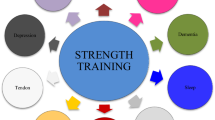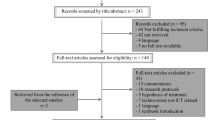Abstract
Introduction Musculoskeletal disorders (MSDs) are among the most frequent causes of disability, with potentially important consequences. Our objective was to investigate from a lifelong perspective the factors associated with these consequences, including permanent withdrawal from the workforce, focusing especially on factors at the start of working life. Methods The data come from the SIP national survey (Santé et Histoire Professionnelle, health and occupational history). Three groups of subjects were compared with multinomial logistic models: group 1 (G1), who had MSDs that caused an important event in their working life; group 2, who had MSDs without any such consequence; and group 3 (G3), who had no MSD. Results In multivariate models, MSDs with consequences on occupational events were strongly associated with a low educational level for both sexes, and with some working conditions. In the comparison G1/G3, the odds-ratio (OR) for “no diploma” compared to “university level” was 4.41 and the confidence interval (95 % CI) 2.31–8.40 for men. For women the OR was 2.02 (95 % CI 1.32, 3.10). Group 2’s educational level was between G1 and G3, closer to G3. For men, another risk factor was a first job in construction or farming (OR = 2.95 for construction, 2.23 for farming, comparison G1/G3). Comparisons focusing on “permanent withdrawal from the workforce” yielded similar results. Conclusions Associations between occupational history and health are complex; the results strongly suggest that factors at the beginning of working life, including level of education, have important delayed consequences, especially for workers with health disorders such as MDSs. In order to reduce the frequency of negative consequences, a better knowledge on causal mechanisms would be needed.
Similar content being viewed by others
References
Robroek SJW, Schuring M, Croezen S, Stattin M, Burdorf A. Poor health, unhealthy behaviours, and unfavourable work characteristics influence pathways of exit from paid employment among older workers in Europe: a four year follow-up study. Scand J Work Environ Health. 2013;39(2):125–33.
Schuring M, Robroek SJ, Otten FW, Arts CH, Burdorf A. The effect of ill health and socioeconomic status on labour force exit and re-employment: a prospective study with ten years follow-up in the Netherlands. Scand J Work Environ Health. 2013;39(2):134–43.
Jusot F, Khlat M, Rocheteau T, Sermet S. Un mauvais état de santé accroît fortement le risque de devenir chômeur ou inactif [Ill health increases the risk of job loss]. Questions d’économie de la santé. 2007;125:1–4.
Van den Berg T, Schuring M, Avendano M, Mackenbach J, Burdorf A. The impact of ill health on exit from paid employment in Europe among older workers. Occup Environ Med. 2010;67:845–52.
Magee W. Effects of illness and disability on job separation. Soc Sci Med. 2004;58:1121–35.
Akinwale B, Lynch K, Wiggins R, Harding S, Bartley M, Blane D. Work, permanent sickness and mortality risk: a prospective cohort study of England and Wales, 1971–2002. J Epidemiol Community Health. 2011;65(9):786–92.
Krokstad S, Westin S. Disability in society-medical and non-medical determinants for disability pension in a Norvegian total county population study. Soc Sci Med. 2004;58:1837–48.
Picavet HJ, Schouten JS. Musculoskeletal pain in the Netherlands: prevalences, consequences and risk groups, the DMC(3)-study. Pain. 2003;102(1–2):167–78.
Goodridge D, Lawson J, Mackiniuk D, Rennie D. A population-based profile of adult Canadians living with participation and activity limitations. CMAJ. 2011;183(13):E1017–24.
Karlsson NE, Carstensen JM, Gjesdal S, Alexanderson KA. Risk factors for disability pension in a population-based cohort of men and women on long-term sick leave in Sweden. Eur J Public Health. 2008;18(3):224–31.
Kärkkäinaen S, Pitkäniemi J, Silventoinen K, Svedberg P, et al. Disability pension due to musculoskeletal diagnoses: importance of work-related factors in a prospective cohort study of Finnish twins. Scand J Work Environ Health 2013 (online first).
Ferrand JF, Chastang JF, Ravaud JF, Leclerc A. Travail et santé, quelques résultats portant sur la population active, issus de l’enquête HID [Work and health, results from the HID survey]. Archives des Maladies Professionnelles. 2005;66(1):1–11.
Cuerq A, Païta M, Ricordeau P. Les causes médicales de l’invalidité [Medical causes for permanent disability]. Points de repère. 2008;16:1–8.
Sérazin C, Ha C, Bodin J, Imbernon E, Roquelaure Y. Employment and occupational outcomes of workers with musculoskeletal pain in a French region. Occup Environ Med. 2013;70:143–8.
Palmer KT, Harris EC, Linaker C, Barker M, Lawrence W, Cooper C, Coggon D. Effectiveness of community and workplace-based interventions to manage musculoskeletal-related sickness absence and job loss: a systematic review. Rheumatology. 2012;51(2):230–42.
Briand C, Durand MJ, St-Arnaud L, Corbière M. How well do return-to-work interventions for musculoskeletal conditions address the multicausality of work disability? J Occup Rehabil. 2008;18(2):207–2017.
Järvholm B. How should methods for return to work be evaluated? Scand J Work Environ Health. 2012;38(2):89–91.
Bültmann U, Sherson D, Olsen J, Hansen CL, Lund T, Kilsgaard J. Coordinated and tailored work rehabilitation: a randomized controlled trial with economic evaluation undertaken with workers on sick leave due to musculoskeletal disorders. J Occup Rehabil. 2009;19(1):81–93.
Leclerc A, Chastang JF, Ozguler A, Ravaud JF. Chronic back problems among persons 30–64 years old in France. Spine. 2006;31(4):479–84.
Morse TF, Dillon C, Warren N, Levenstein C, Warren A. The economic and social consequences of work-related musculoskeletal disorders: the Connecticut Upper-Extremity Surveillance Project (CUSP). Int J Occup Environ Health. 1998;4(4):209–16.
Makela M, Heliovaara M, Sievers K, Knekt P, Maatela J, Aromaa A. Musculoskeletal disorders as determinants of disability in Finns aged 30 years or more. J Clin Epidemiol. 1993;46(6):549–59.
Kristensen P, Bjerkedal T, Irgens JM. Early life determinants of musculoskeletal sickness absence in a cohort of Norvegians born in 1967–1976. Soc Sci Med. 2007;64(3):646–55.
Gjesdal S, Bratberg E, Maeland JG. Musculoskeletal impairment in the Norvegian working population: the prognostic role of diagnoses of sickness absence and transition to disability pension. Spine. 2009;34(14):1519–25.
Dionne CE, Von Korff M, Koepsell TD, Deyo RA, Barlow WE, Checkoway H. Formal education and back pain: a review. J Epidemiol Community Health. 2001;55:455–68.
Hagen KB, Holte HH, Tambs K, Bjerkedal T. Socioeconomic factors and disability retirement from back pain. Spine. 2000;25(19):2480–7.
Hagen K, Zwart JA, Svebak S, Bovim G. Jacob Stovner L. Low socioeconomic status is associated with chronic musculoskeletal complains among 46,901 adults in Norway. Scand J Public Health. 2005;33(4):268–375.
Lincoln AE, Smith GS, Amoroso PJ, Bell NS. The natural history and risk factors of musculoskeletal conditions resulting in disability among US Army personnel. Work. 2002;18(2):99–113.
Wijnhoven HA, de Vet HC, Picavet HS. Sex differences in consequences of musculoskeletal pain. Spine. 2007;32(12):1360–7.
Latza U, Kohlmann T, Deck R, Raspe H. Influence of occupational factors on the relation between socioeconomic status and self-reported back pain in a population-based sample of German adults with back pain. Spine. 2000;25(11):1390–7.
Latza U, Kohlmann T, Deck R, Raspe H. Can health care utilization explain the association between socioeconomic status and back pain? Spine. 2004;29(14):1561–6.
Saastamoinen P, Leino-Arjas P, Laaksonen M, Lahelma E. Socio-economic differences in the prevalence of acute, chronic and disabling chronic pain among ageing employees. Pain. 2005;114(3):364–71.
Barnay T. Chômage et invalidité après 50 ans: deux dispositifs alternatifs de sortie de l’emploi pour les seniors en mauvaise santé? [Job loss and disability, two alternatives for older workers with chronic diseases?] Econ et stat. 2008;411:47–63.
Coutrot T, Rouxel C, Bahu M, Herbet JB, Mermilliod C. Parcours professionnel et état de santé [Occupational trajectories and health]. Premières Synthèses Dares Drees. 2010;1:1–10.
Amossé T, Daubas-Letourneux V, Le Roy F, Meslin K, Barragan K. Les accidents du travail et problèmes de santé liés au travail dans l’enquête SIP [Work injuries and work-related diseases in the SIP survey]. Report no 76, CEE, 2012.
Guiho-Bailly MP, Bertin C, Dubre JY, Lancien N, Machefer J, Parent D. Rapport subjectif au travail: sens des trajets professionnels et construction de la santé [How workers describe the links between their health and their occupational history]. Final report. Document de travail, Etudes et recherches. 200. DREES 95.
Pedersen J, Bjorner JR, Burr H, Christensen KB. Transition between sickness absence, work, unemployment, and disability in Denmark 2004–2008. Scand J Work Environ Health. 2012;38(6):516–26.
Burdorf A. The need for novel strategies to analyse the dynamic pattern of worker’s health over time and the consequences for sustained employability. Scand J Work Environ Health. 2012;38(6):485–8.
Roquelaure Y, Vénien K, Moisan S, Penneau-Fontbonne D, Lasfargues G, Fouquet B. Déclarer une lombosciatique en maladie professionnelle: est-ce l’avantage bien compris du patient? [Applying for compensation in case of work-related low back pain, is it the best for the patient?] Revue du Rhumatisme. 2005;72:531–3.
Gayet-Viaud C. Itinéraires de victimes d’accident de travail et de maladies professionnelles. Freins et entraves à la mobilisation pour les droits à la santé et à la réparation [From a work-related disease or injury to compensation, a complex process]. In: Courtet C and Gollac M, editors. Risques du travail, la santé négociée. Paris: La découverte; 2012. p. 123–42.
Soklaridis S, Ammendolia C, Cassidy D. Looking upstream to understand low back pain and return to work: psychosocial factors as the product of system issues. Soc Sci Med. 2010;71(9):1557–66.
Hagen KB, Tambs K, Bjerkedal T. What mediates the inverse association between education and occupational disability from back pain? A prospective cohort study from the North-Trondelag health study in Norway. Soc Sci Med. 2006;63:1267–75.
Leclerc A, Gourmelen J, Chastang JF, Plouvier S, Niedhammer I, Lanoë JL. Level of education and back pain in France: the role of demographic, lifestyle and physical work factors. Int Arch Occup Environ Health. 2009;82:643–52.
Reinhardt JD, Wahrendorf M, Siegrist J. Socioeconomic position, psychosocial work environment and disability in an ageing workforce: a longitudinal analysis of SHARE data from 11 European countries. Occup Environ Med. 2013;70:156–63.
Van Duijn M, Miedema H, Elders L, Burdorf A. Barriers for early return-to-work of workers with musculoskeletal disorders according to occupational health physicians and human resources managers. J Occup Rehabil. 2004;14(1):31–41.
Kristensen P, Aalen OO. Understanding mechanisms: opening the “black box” in observational studies. Scand J Work Environ Health. 2013;39(2):121–1124.
Acknowledgments
This project was supported by a grant from DARES and DREES.
Author information
Authors and Affiliations
Corresponding author
Rights and permissions
About this article
Cite this article
Leclerc, A., Pascal, P., Chastang, JF. et al. Consequences of Musculoskeletal Disorders on Occupational Events: A Life-long Perspective from a National Survey. J Occup Rehabil 24, 297–306 (2014). https://doi.org/10.1007/s10926-013-9457-6
Published:
Issue Date:
DOI: https://doi.org/10.1007/s10926-013-9457-6




